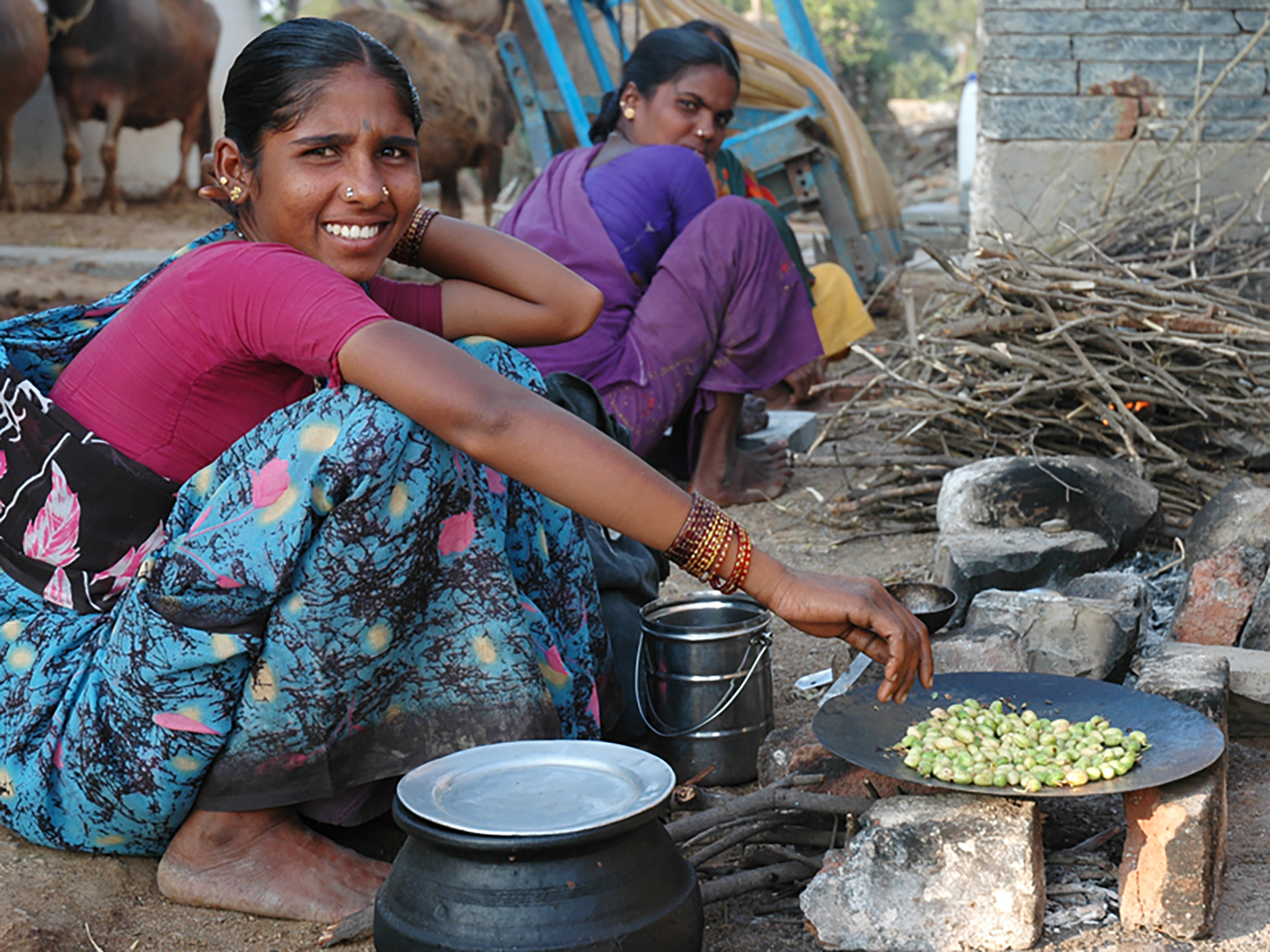Scientific name: Cicer arietinum
Common name: Bengal gram (English) Channa (Hindi)
ICRISAT's unwavering commitment to chickpea breeding has led to significant breakthroughs, focusing on developing varieties that are high-yielding and resilient to environmental challenges, especially drought. Through their efforts, the organization has achieved remarkable milestones, some of which include:
Machine-harvestable chickpea NBeG 47: This innovative variety was developed to enhance harvesting efficiency, reducing the tediousness and high production costs associated with manual harvesting.
Heat-tolerant and high-yielding variety ICCV 92944: Released in multiple countries, including India, Myanmar, Kenya, and Bangladesh, this improved variety has proven its resilience in challenging climates.
KAK2: The first large-seeded Kabuli variety released in India, demonstrating ICRISAT's commitment to enhancing chickpea diversity and nutritional value.

ICRISAT's pioneering work in chickpea research extends beyond variety development. In 2013, the organization led the monumental task of sequencing the first chickpea genome, opening doors for molecular resources that have revolutionized crop improvement efforts. More recently, ICRISAT spearheaded an international collaboration involving 41 organizations to assemble chickpea's pan-genome. The result was the identification of 29,870 genes, including 1,582 previously unreported novel genes, ushering in a new era of chickpea improvement.
Collaborating with the Indian Council of Agricultural Research (ICAR), ICRISAT embarked on developing chickpea varieties suitable for mechanical harvesting. NBeG 47, a desi chickpea variety with a semi-erect growth habit, demonstrated immense promise and suitability for mechanized harvesting. Responding to the growing demand, ICRISAT released two additional machine-harvestable chickpea varieties, ICCV 08102 (RVG 204) and ICCV 08108 (Phule Vikram), in various Indian states.
Through these pioneering efforts, ICRISAT continues to drive chickpea breeding and research forward, enabling greater productivity, resilience, and sustainability for this vital legume. The organization's dedication to advancing chickpea cultivation plays a crucial role in securing food and nutritional security for communities around the world.
ICRISAT's dynamic breeding program exemplifies a commitment to excellence by continuously evaluating and updating market segments for each crop, engaging in meaningful consultations with stakeholders. By doing so, the program can effectively prioritize breeding traits that align with current challenges faced by crop production, as well as the preferences of farmers, consumers, processors, and other essential actors along the agri-food value chain.
Presently, the ICRISAT breeding program for chickpea centers on two distinct market segments:
Desi Chickpea for Food Purposes: This segment caters to a variety of culinary applications, including flour, raw consumption, split dhal, and roasted snacks. To meet the diverse needs of this market, the program prioritizes several key traits, such as maturity duration, grain yield, resistance to Fusarium Wilt, heat tolerance during the reproductive stage, seed size, seed color, and dehulling percentage.
This segment focuses on chickpeas utilized in salads, hummus, curries, and various snacks. Recognizing the significance of this market, the breeding program emphasizes traits such as maturity duration, grain yield, resistance to Fusarium Wilt, reproductive stage heat tolerance, and seed color.
By aligning their efforts with the specific demands and preferences of each market segment, ICRISAT's chickpea breeding program enhances its ability to develop superior varieties that cater to the needs of various stakeholders. The pursuit of these critical breeding traits ensures that the resulting chickpea varieties contribute significantly to food security, market demand, and overall sustainability within the agricultural sector.
Should you have any questions our dedicated support team is ready to help. Please email: research@icrisat.org